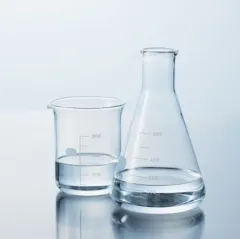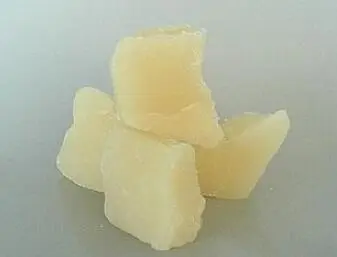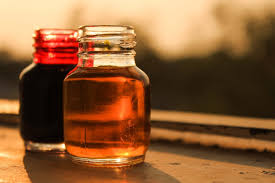Overview of Polyacrylamide Flocculant PAM Partially Hydrolyzed Cationic Anionic Nonionic Powder MSDS Polyacrylamide for Oil Drilling Water Treatment
Nonionic surfactants are a class of surface-active agents that do not carry an electrical charge in aqueous solutions, distinguishing them from ionic surfactants like cationics and anionics. They are composed of a hydrophilic (water-loving) head group and a hydrophobic (oil-loving) tail, which allows them to reduce surface tension between fluids and facilitate interactions between substances that are normally immiscible. Their neutrality makes them stable over a wide pH range and compatible with other types of surfactants, making them highly versatile in numerous applications.
Features of Polyacrylamide Flocculant PAM Partially Hydrolyzed Cationic Anionic Nonionic Powder MSDS Polyacrylamide for Oil Drilling Water Treatment
-
Neutral Charge: Lack of charge leads to compatibility with both anionic and cationic substances, reducing the risk of precipitation or instability in formulations.
-
Wide pH Stability: Function effectively across a broad pH range, making them suitable for diverse chemical environments.
-
Solubility: Readily soluble in both water and organic solvents, enhancing their utility in cleaning, emulsification, and dispersion processes.
-
Low Foam Profile: Many nonionic surfactants generate less foam compared to their ionic counterparts, beneficial in applications where excessive foam is undesirable.
-
Wetting and Spreading: Excellent at reducing surface tension, promoting wetting and spreading of liquids on surfaces, improving cleaning and coating processes.
-
Emulsification: Efficiently stabilize oil-in-water or water-in-oil emulsions, depending on their structure, which is crucial in formulations like cosmetics, agrochemicals, and food products.

(Polyacrylamide Flocculant PAM Partially Hydrolyzed Cationic Anionic Nonionic Powder MSDS Polyacrylamide for Oil Drilling Water Treatment)
Specification of Polyacrylamide Flocculant PAM Partially Hydrolyzed Cationic Anionic Nonionic Powder MSDS Polyacrylamide for Oil Drilling Water Treatment
Polyacrylamide Flocculant (PAM) is a high-performance polymer commonly used in oil boring, water therapy, and commercial processes because of its exceptional flocculation, thickness alteration, and suspension abilities. Offered in cationic, anionic, nonionic, and partly hydrolyzed forms, PAM is created to resolve varied treatment needs.
** Requirements: **.
– ** Types & Cost Density: **.
– * Anionic PAM: * Includes unfavorable charge density (10-40%), perfect for binding positively charged particles. Utilized in mineral processing, wastewater explanation, and sludge dewatering.
– * Cationic PAM: * Positively billed (5-60%), efficient for counteracting adversely billed colloids in municipal sewer, organic sludge, and papermaking wastewater.
– * Nonionic PAM: * Neutral cost, suitable for acidic or high-salinity atmospheres, such as metallurgical wastewater and coal cleaning.
– * Partially Hydrolyzed PAM: * Modified anionic type with boosted solubility and adsorption, maximized for oil healing and drilling fluid viscosity control.
– ** Physical Residences: **.
– * Look: * White or off-white free-flowing powder.
– * Molecular Weight: * 1-30 million Daltons, flexible based on application.
– * Solubility: * Dissolves in water within 60-90 minutes, creating a viscous remedy.
– * Moisture Content: * ≤ 10%.
– * pH Variety: * 5-14 (anionic/nonionic); 3-10 (cationic).
– * Service life: * 2 years in completely dry, amazing problems.
** Applications: **.
– * Oil Boring: * Acts as a lubricant, shale prevention, and fluid-loss controller in drilling muds. Enhances wellbore security and recuperation rates.
– * Water Treatment: * Removes suspended solids, heavy metals, and organic contaminants by means of cost neutralization and linking. Utilized in metropolitan, industrial, and mining wastewater.
** Safety (MSDS): **.
– * Dealing with: * Make use of safety equipment (handwear covers, goggles) to avoid breathing or skin get in touch with. Dirt may cause irritability.
– * Storage: * Keep in secured bags away from dampness, heat, and direct sunshine.
– * Disposal: * Comply with regional regulations; avoid ecological release. Safe yet may affect water communities if unmanaged.
PAM’s convenience and performance make it vital in improving functional effectiveness and ecological conformity. Users need to adhere to dose standards and safety and security protocols to optimize performance and lessen risks.

(Polyacrylamide Flocculant PAM Partially Hydrolyzed Cationic Anionic Nonionic Powder MSDS Polyacrylamide for Oil Drilling Water Treatment)
Applications of Polyacrylamide Flocculant PAM Partially Hydrolyzed Cationic Anionic Nonionic Powder MSDS Polyacrylamide for Oil Drilling Water Treatment
Polyacrylamide (PAM) flocculant, readily available in partially hydrolyzed, cationic, anionic, and nonionic kinds, is a versatile polymer widely utilized in oil exploration and water treatment markets. Its special chemical framework and adjustable ionic attributes make it an essential additive for enhancing efficiency in fluid monitoring, sedimentation, and contaminant removal procedures.
In ** oil boring **, PAM serves multiple roles. As a viscosifier, it supports drilling fluids, reducing rubbing and boosting lubrication in boreholes. Its capability to manage fluid loss ensures wellbore stability by stopping clay swelling and development damage. Partly hydrolyzed anionic PAM is commonly used in water-based exploration fluids to improve suspension of cuttings and enhance filtering control. Cationic PAM help in maintaining shale developments, while nonionic PAM is liked in high-salinity or high-temperature atmospheres as a result of its resistance to ionic interference.
For ** water therapy **, PAM serves as a very reliable flocculant. Anionic PAM binds with suspended solids, raw material, and colloidal fragments in wastewater, developing huge flocs that work out quickly. This is especially helpful in commercial effluent treatment, mining tailings administration, and metropolitan sewer system. Cationic PAM excels in dealing with water with high organic content or adversely charged bits, such as in paper mill wastewater or coloring markets. Nonionic PAM is excellent for neutral or low-ionic-strength systems, supplying flexibility in pH-sensitive applications. In drinkable water therapy, PAM reduces turbidity and eliminates contaminants without introducing poisoning.
The ** Material Safety And Security Data Sheet (MSDS)** for polyacrylamide stresses risk-free dealing with methods. While PAM itself is non-toxic, its powder type requires safety measures to prevent breathing or skin get in touch with. Proper storage space in a trendy, completely dry environment avoids moisture absorption and clumping. Liquified PAM options need to be used quickly to keep effectiveness.
Key advantages of PAM consist of high efficiency at reduced does, cost-effectiveness, and adaptability to varied operational problems. Its role in sludge dewatering– decreasing moisture web content in industrial sludge– enhances waste administration performance. In oil recuperation, PAM improves sweep performance in enhanced oil recovery (EOR) by enlarging injected water, displacing more crude from tanks.
Generally, polyacrylamide flocculants are indispensable in enhancing source recuperation and environmental management throughout sectors. Their tailored ionic residential or commercial properties and compliance with safety and security requirements make them a reputable service for complicated fluid-handling challenges.
Company Profile
SurfactantChina is a trusted global chemical material supplier & manufacturer with over 12-year-experience in providing super high-quality surfactant and relative products.
The company has a professional technical department and Quality Supervision Department, a well-equipped laboratory, and equipped with advanced testing equipment and after-sales customer service center.
If you are looking for high-quality surfactant and relative products, please feel free to contact us or click on the needed products to send an inquiry.
Payment Methods
L/C, T/T, Western Union, Paypal, Credit Card etc.
Shipment
It could be shipped by sea, by air, or by reveal ASAP as soon as repayment receipt.
5 FAQs of Polyacrylamide Flocculant PAM Partially Hydrolyzed Cationic Anionic Nonionic Powder MSDS Polyacrylamide for Oil Drilling Water Treatment
What is Polyacrylamide Flocculant (PAM) and its primary uses? Polyacrylamide Flocculant (PAM) is a water-soluble polymer available in cationic, anionic, and nonionic forms. It is widely used in water treatment and oil drilling industries. In water treatment, PAM acts as a flocculant to separate suspended solids, clarify wastewater, and reduce sludge. In oil drilling, it serves as a viscosifier, friction reducer, and shale stabilizer to improve drilling efficiency and fluid recovery. Its adaptability to different environments makes it a versatile solution for industrial applications.
How does PAM work in water treatment and oil drilling? In water treatment, PAM particles bind to suspended solids via charge neutralization or bridging, forming larger flocs that settle or filter out easily. For oil drilling, partially hydrolyzed PAM increases drilling fluid viscosity, reducing friction and stabilizing boreholes. It also enhances oil recovery by modifying water viscosity in flooding processes, ensuring efficient displacement of oil from reservoirs.
What are the differences between cationic, anionic, and nonionic PAM? Cationic PAM carries a positive charge, ideal for organic or negatively charged particles in sludge dewatering. Anionic PAM has a negative charge, suited for inorganic or positively charged particles in mineral processing. Nonionic PAM lacks charge, making it effective in acidic or high-salinity environments where pH sensitivity is a concern. Selection depends on the target particles and application conditions.
Are there safety precautions when handling PAM? While PAM is generally low-toxicity, direct contact with powder or concentrated solutions should be avoided. Use gloves, goggles, and masks to prevent inhalation or skin irritation. Follow MSDS guidelines for storage, disposal, and spill management. Avoid releasing PAM into waterways untreated, as it may degrade into acrylamide monomers, which are neurotoxic.
How should PAM be stored, and what is its shelf life? Store PAM in a cool, dry, ventilated area away from moisture and direct sunlight. Keep containers sealed to prevent clumping. Shelf life is typically 12–24 months if stored properly. For dissolved solutions, use within 48 hours to maintain efficacy. Test viscosity or activity periodically if long-term storage is required.

(Polyacrylamide Flocculant PAM Partially Hydrolyzed Cationic Anionic Nonionic Powder MSDS Polyacrylamide for Oil Drilling Water Treatment)





